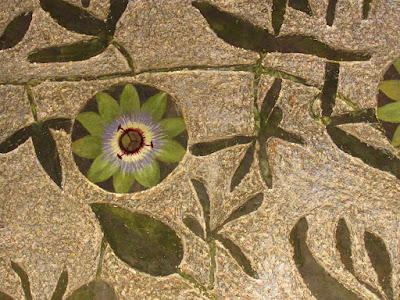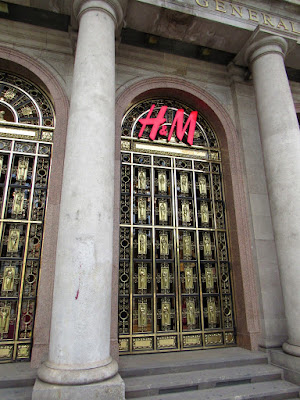Barcelona For a Day of Various Whimsy...
We arrived very late last night, due to flight delays in Lisbon. Today, we hit the ruta running with the topics of the day being Modernisme which began here in Barcelona and whimsy which we found everywhere we looked.
And what better place to learn about Gaudí than at Casa Vicens, the first project the architect designed and built. "It is the first house, where Gaudí first applied all his baggage, with all of his sources, influences and experiences on other projects, and his own idea of a single-family home, as a single unit and whole, where construction and ornamentation are integrated in such a way that one cannot be understood without the other."
At Casa Vicens, there is a series of elements that are seen in his later works, in some cases evolved but always based on this initial concept, this “Gaudí before Gaudí”. Our guide called it "pre-historic Gaudí”.
It wasn't until last November that this home opened to the public for the very first time. It has always been a private home. As a matter of fact, it was expanded and Steve is standing at the 'seam' between the two halves.
In 1883, Manel Vicens i Montaner, a stock and currency broker, entrusted the young architect (Gaudí was 30) with designing his summer garden home in the former village of Gràcia. It is his first masterpiece and one of the first buildings to kick off the Modernisme movement in Catalonia and Europe.
I was beyond amazed at the walls throughout this home. All were decorated with Sgraffito, a technique produced by applying layers of plaster tinted in contrasting colors to a moistened surface in two successive layers of contrasting slip or glaze, and then in either case scratching so as to reveal parts of the underlying layer. Wow, right?
At Casa Vicens, Gaudí created his first accessible rooftop, a true vantage point and place to get away from it all and contemplate life. It featured a walkway around all four sides of the pitched roof, with curved terracotta roof tiles to collect the water.
On this rooftop, a small cupola crowns the tower on the western corner of the façade and three identical brick structures act as caps to the home’s chimneys. These structures, like the façade, are clad in green and white ceramic tiles and show how Gaudí was influenced by Islamic and Asian architecture.
After a thorough explore of Gaudí's first work, we fueled up and went exploring for more of his masterpieces and other's the town revealed to us. Barcelona is a treasure chest of amazement.
Isn't this the coolest H & M department store ever?
The search for whimsy did not disappoint.
We loved the Arc de Triomf, a triumphal arch built as the main access gate for the 1888 Barcelona World Fair.
If this face doesn't express whimsy, what does?
I loved this whimsical which greeted us on the way to the harbor. El Cap de Barcelona is a surrealist sculpture created by American Pop artist Roy Lichtenstein for the 1992 Summer Olympics. This was Lichtenstein's first outdoor work using ceramic tile. It is said to acknowledge Antoni Gaudí and Barcelona's affinity for mosaics.
We toasted ourselves and the travels we've made over the last 40 days. The trip will end but the memories we've made are truly unforgettable. Thanks for joining us on this amazing adventure.






























0 comments:
Post a Comment